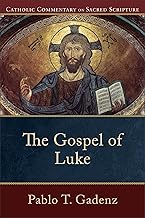Summary of "The Resurrection of Jesus: Luke 24"
Summary of “The Resurrection of Jesus: Luke 24”
This video explores the resurrection narrative of Jesus as presented in the Gospel of Luke, chapter 24, highlighting key themes and events that shape the Christian understanding of Jesus’s identity and mission.
Main Ideas and Concepts
Jesus’s Life and Mission
- Jesus was an unlikely king born into humble circumstances.
- He traveled through Israel teaching a radical way of life focused on love, forgiveness, care for the poor, and reconciliation.
- His miracles and teachings inspired hope that He would liberate Israel from Roman rule and establish God’s Kingdom on earth.
- However, religious leaders saw Jesus as a threat because His message subverted their expectations of power and status.
Conflict and Crucifixion
- Jesus challenged the temple authorities and disrupted temple sacrifices.
- He was arrested, falsely accused of rebellion, and crucified despite his innocence.
- Joseph of Arimathea, a religious leader, requested Jesus’s body for burial in a tomb.
The Empty Tomb and Resurrection Appearances
- Women followers found Jesus’s tomb empty and were told by mysterious figures that He had risen.
- Their testimony was initially met with disbelief.
- Two disciples on the road to Emmaus were confused and sorrowful; Jesus joined them but they did not recognize Him.
- Jesus explained how the Jewish scriptures foretold that the Messiah would suffer, die, and be resurrected to bring true life.
- Their eyes were opened when Jesus broke bread with them, recalling the Last Supper, symbolizing His broken body on the cross.
The Challenge of Recognizing Jesus
- The narrative emphasizes the difficulty of perceiving Jesus’s true nature—how divine power is revealed through apparent weakness and suffering.
- Embracing Jesus’s “upside down kingdom” requires a transformation of imagination and faith.
Jesus’s Final Appearances and Ascension
- Jesus appears to His disciples again, sharing a meal and demonstrating His resurrected, transformed body.
- He promises to empower them with divine power to spread the Good News.
- Jesus ascends into Heaven, symbolizing His enthronement as Divine King.
- The disciples remain in Jerusalem, worshipping and awaiting the promised power, setting the stage for the Book of Acts.
Methodology / Narrative Structure
- Introduction to Jesus’s life and ministry:
- Humble birth
- Radical teachings and miracles
-
Growing hope for a political and spiritual kingdom
-
Conflict with religious leaders:
- Jesus challenges temple practices
- Arrest and false accusations
-
Crucifixion and burial by Joseph of Arimathea
-
Resurrection events:
- Women discover empty tomb
- Encounter with mysterious figures announcing resurrection
-
Disciples’ skepticism
-
Road to Emmaus story:
- Jesus joins two disciples without being recognized
- Explanation of scriptures predicting Messiah’s suffering and resurrection
-
Recognition through the breaking of bread
-
Reflection on the difficulty of recognizing Jesus’s true identity:
- Divine power revealed through suffering and humility
-
Call to transform one’s imagination to understand the Gospel message
-
Final appearances and ascension:
- Jesus’s resurrected body and shared meal with disciples
- Promise of divine empowerment for mission
- Ascension to Heaven as Divine King
- Disciples await empowerment in Jerusalem
Speakers / Sources Featured
- Narrator/Presenter: Provides the overall explanation and commentary on Luke 24.
- Jesus: Quoted indirectly through the narrative (e.g., his questions to the disciples, breaking bread).
- Disciples and Followers of Jesus: Referenced in their reactions and experiences (women at the tomb, Emmaus disciples).
- Religious Leaders (Joseph of Arimathea and others): Mentioned as part of the story context.
This summary captures the theological and narrative essence of Luke 24 as presented in the video, emphasizing the transformative power of Jesus’s resurrection and its implications for faith and mission.
Category
Educational
Share this summary
Featured Products




